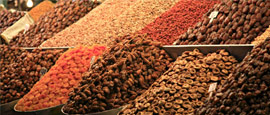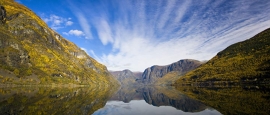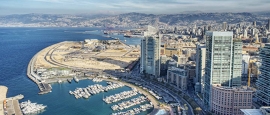French artist Jacques Majorelle spent 40 years turning an ordinary plot into an exotic garden with plants from around the world, including giant cacti and delicate bamboo. The compound also features a Moorish house and a Cubist-style villa. The garden was later saved and lovingly restored by the celebrated fashion designer Yves Saint Laurent and his partner Pierre Bergé when they bought it in 1980. Today, it offers a little haven of tranquillity to visitors.
Things to see in Marrakech
Tourist offices
Address: Rue Cadi Ayad, Guéliz, Marrakech, Morocco
Tel: +212 5244 33407
Opening Hours:
Mon-Fri 0830-1630.
visitmorocco.comThe city's principal tourist office is located in Guéliz. You can also download the VisitMarrakech App before you go.
Sat within the UNESCO-listed medina, Jemaa el-Fna is widely considered as Marrakech's beating heart. Commercial activities and varying forms of entertainment have taken place on this vast, triangular square since the city's foundation in the 11th century. It is most fun to visit in the evening when food vendors set up stalls to sell a wide variety of dishes, while entertainers turn the square into a giant theatre.
Marrakech's sprawling souks are buzzing with colours and energy, selling a myriad of goods. Many souks are located on the north side of Jemaa el-Fna. Around this area, you will find souk Semmarine (for fabrics and souvenirs), souk Larzal (wool or clothing, depending on the time of day), souk Zrabi (for carpets), souk Cherratin (for leatherware), souk Smata (for Moroccan slippers), and souk Haddadine (for lanterns and metalworks), among other souks.
A stone's throw away from the Jarden Majorelle, this excellent museum charts many great moments of the legendary fashion designer Yves Saint Laurent, including an extensive collection of haute couture garments. There is a book shop and a café within the compound.
Backdropped by the Atlas Mountains, the highly imaginative Anima is the brainchild of Austrian artist André Heller. The garden bursts with full-grown trees and fragrant shrubs, along with gorgeous sculptures by Pablo Picasso, Keith Haring and other artists. Located 36km (22mi) south of Marrakech in Ourika, Anima runs a free shuttle to and from Marrakech – shuttle reservation must be made in advance.
The 19th-century Bahia Palace grants visitors an intimate glance into the lives of royalty. The former residence of the Grand Vizier's wives and concubines is lavishly covered in marble and marvellous mosaics, arguably the most beautiful part of the palace.
You'll need your imagination to get the most from El Badii Palace. Translated as the 'incomparable', the complex was once Marrakech's grandest structure. Today, all that remains is its atmospheric ruins. A walk around the site's sunken gardens is still rewarding, with a chance to see the restored 12th-century marquetry minbar (pulpit), housed in the tiny on-site museum.
One of the most visited sites in Marrakech, and a must for history buffs, the Saadian Tombs were re-discovered in 1917 after being walled up and forgotten for centuries. The principal structures of the tombs date from the 16th century. An enclosed garden is overlooked by two separate mausoleums, with over 100 mosaic-decorated graves scattered inside lavishly decorated chambers.
From any approach, the first sight of Marrakech is the minaret tower of the Koutoubia Mosque. The tower is the city's tallest building and acts as a handy reference point for lost travellers. Although the mosque is accessible only to Muslims, the surrounding gardens are a popular relaxation spot for both locals and tourists; an oasis of calm next to the chaotic Jemaa el-Fna.
With its backdrop of the Atlas Mountains, it is no surprise that the Menara Gardens are one of the most photographed places in Morocco. The park boasts large olive groves, palm and fruit trees, all set around a magnificent reflecting pool.
This beautiful riad contains the private collection of folk crafts belonging to Dutch collector Bert Flint. This small and quirky museum leads visitors on a journey from Tuareg artefacts of the Sahara to the talismanic Berber adornments of the Atlas Mountains.
Do you have any Feedback about this page?
© 2025 Columbus Travel Media Ltd. All rights reserved. No part of this site may be reproduced without our written permission, click here for information on Columbus Content Solutions.








 You know where
You know where